Fujifilm X-S10 at a glance
- £929 body only
- £1399 with 16-80mm lens
- 26.1MP APS-C X-Trans CMOS sensor
- ISO 160-12,800 (standard); ISO 80-51,200 (extended)
- 5-axis in-body stabilisation
- Up to 30fps shooting
- 4K 30p video recording
- 3in fully articulated touchscreen
Spectacular views, snow topped mountain peaks, Christmas in the sun, quirky Aunts, and incredible wildlife – New Zealand has much to offer, especially for photographers, regardless of genre. So, when I booked my month-long bucket list trip across the world for December 2022 with my other half and his family, I knew this was the perfect opportunity to try something new and leave my beloved Pentax K-70 behind.
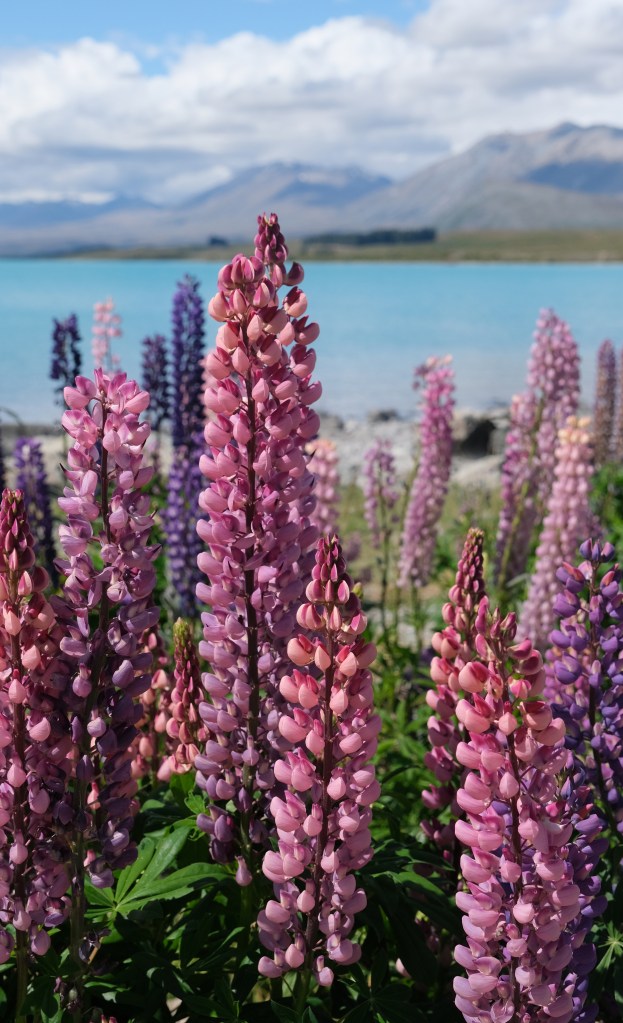
Lupins at Lake Tekapo. A beautiful plant that is considered a weed in the country. Fujifilm X-S10, Fujifilm 16-80mm F4 R OIS WR, 1/1400sec at f/6.4, ISO 320. Image credit: Jessica Miller
Choosing my kit
As an avid DSLR user that in the near to distant future is looking to upgrade her kit, I really didn’t know where to start when looking. This is where our buyers guides, and expert reviews came in to help me explore camera options and make a decision.
When I was searching for a camera the top things I considered were: if it was DSLR user friendly, compact in size, lighter than my Pentax, easy to use and within a budget of around £1000. I would call myself a fine art photographer, and usually my work incorporates street, landscape, and architecture – with my pinky toe dipping into wildlife and portrait photography occasionally. So, most of all, whatever I chose needed to be a good all-rounder.
I wasn’t necessarily looking for a mirrorless camera. But given there are so many options out there now and I had an opportunity to try something completely different, then why not consider it?
I made my decision for what to borrow based on what I would genuinely look to buy myself in the future. After a few weeks of research, I settled with the Fujifilm X-S10. I also considered the Fujifilm X-T4, but given my mentioned requirements and the fact I only had a month to use the camera, the junior X-S10 seemed like a better way to go.
The reduced size and weight were a big bonus, especially when travelling around. It weighs a mere 465g (including battery and SD card) a whole 200g lighter than my Pentax body, taking the complete system with kit lens to less than a kilogram. Not only that, but as a junior version of the X-T4 it also offers many of the top-level features and performance, such as the 26-megapixel image sensor, AF system and in-body stabilisation, in a smaller, entry level body.
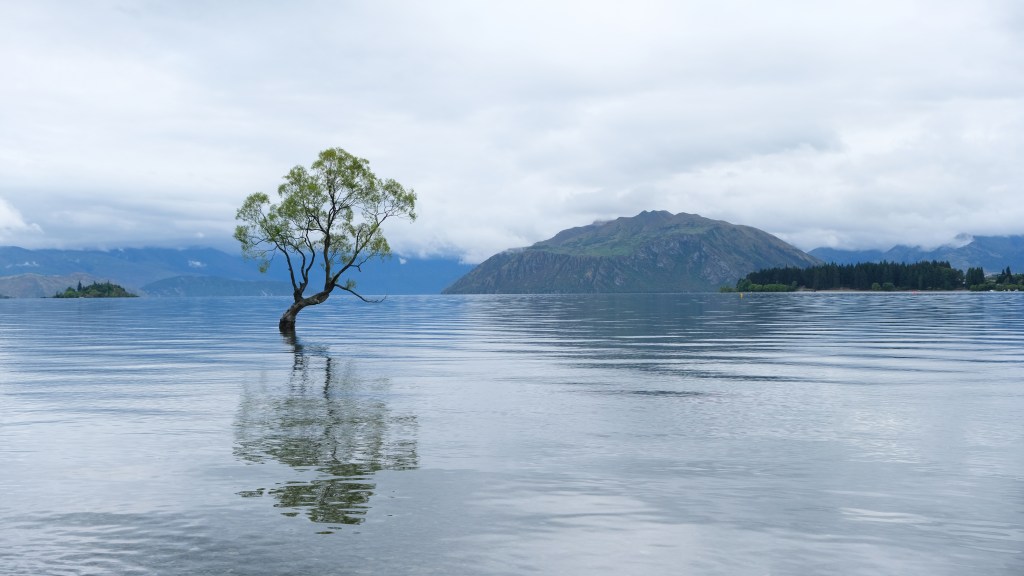
That Wanaka Tree, a lone willow tree located in Lake Wānaka. Otherwise known as New Zealand’s most famous tree. Fujifilm X-S10, Fujifilm 16-80mm F4 R OIS WR, 1/850sec at f/5.6, ISO 320. Image credit: Jessica Miller
Lenses for Fujifilm X-S10
I also chose a selection of lenses that were near the equivalent of my current Pentax lenses (Pentax 18-135mm, 50mm and 55-300mm). Firstly, the 16-80mm kit lens (£1,399 with Fujifilm X-S10, £699 lens only) and Fujifilm XF 70-300mm F4-5.6 R LM OIS WR (£749). Plus, the Fujifilm XF 23mm F1.4 R LM WR (£599) – as well as being named as our best all-purpose Fujifilm prime lens in our X-mount lens buyers guide AND now awarded the Prime Lens of the Year award at the 2023 AP Awards, at a 35mm full-frame equivalent this is a popular focal length for street and documentary photography. All those lenses are weather sealed, which gave me some reassurance that the X-S10 body didn’t.
Taking three lenses might sound excessive, but with a wide range of potential subjects and the duration of my stay – I wanted options. At least that’s what I told my partner when explaining why I needed them all. Plus, as the X-S10 body measures only 126mm x 85.1mm x 65.4mm, I had plenty of space in the camera compartment of my bag for an extra lens.
I used the Lowepro Truckee BP 250 LX backpack for this trip as hand luggage, and for carrying around my gear on walks. It has a dedicated space for camera gear, with a divider where I could put all my other in-flight essentials, and a laptop sleeve. Of course, I had a smaller bag in the suitcase for when I didn’t need, or want, to carry more than 1 or 2 lenses.

Jess at Milford Sound. Going on boat trips were the only time I was really worried about the X-S10’s lack of weather proofing.
Fujifilm X-S10: South Island road trip
We had a plan for the first 2 weeks before Christmas to go travelling around the South Island – which of course included stopping at many hot spots for photography – including THAT Wanaka Tree. The first part of the tour saw us in Te Anau, with a boat trip planned at Milford Sound. Ideally here you would hope for rain to encourage waterfalls to come from the hills. Instead, on the day of our boat trip we were met by warm sunshine. I didn’t particularly mind this, especially as the camera isn’t weatherproof, despite having to completely cover up from potentially being eaten alive by sandflies.
However, one hour into the boat trip we were met by mist rolling in and some light rain – we then experienced the sound in its moody glory, as well as the ‘Four Seasons in One Day’ phrase commonly used over in that part of the world. This is where I had a pang of worry over the camera getting wet as not only was it raining but this part of the trip saw us getting close to waterfalls. I had my trusty camera mac with me to stop getting soaked.
The second pang came when the battery had depleted to 10% before the end of the 2-hour trip. Did I get too snap happy? Maybe. But the battery life for the X-S10 lasts for approximately 325 shots. Not great when you’re out photographing all day, especially if you only have one battery. However, the battery can be charged using the USB-C port, so my portable charger came in handy on the go. Lesson learnt.
On our travels out of Milford we experienced the kea. A clever mountain parrot notorious for being cheeky and mischievous, and potentially ripping your windscreen wipers off without a thought. Now I don’t usually photograph wildlife, but this was one of my winning streaks of photographing animals in New Zealand. When the bird came up to our car and sat on the mirrors, I had to photograph its true character. The level of detail I was able to get was fantastic.
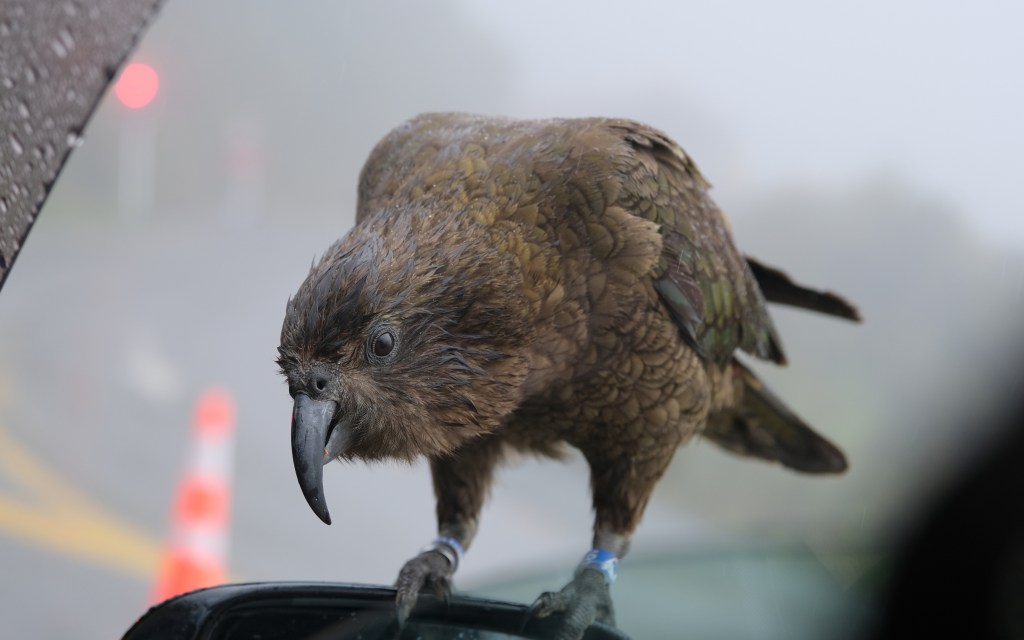
Getting up close to the cheeky kea as it perched on our mirrors. Fujifilm X-S10, Fujifilm 16-80mm F4 R OIS WR, 1/200sec at f/4, ISO 320. Image credit: Jessica Miller
Fujifilm X-S10 for street photography
The next stop saw us in Queenstown – where I set myself the challenge of only shooting with the 23mm prime for some street shots. For the first time in my photography I felt inconspicuous on the streets. My Pentax is quite bulky as well as loud, so it’s not ideal if you want to be discreet.
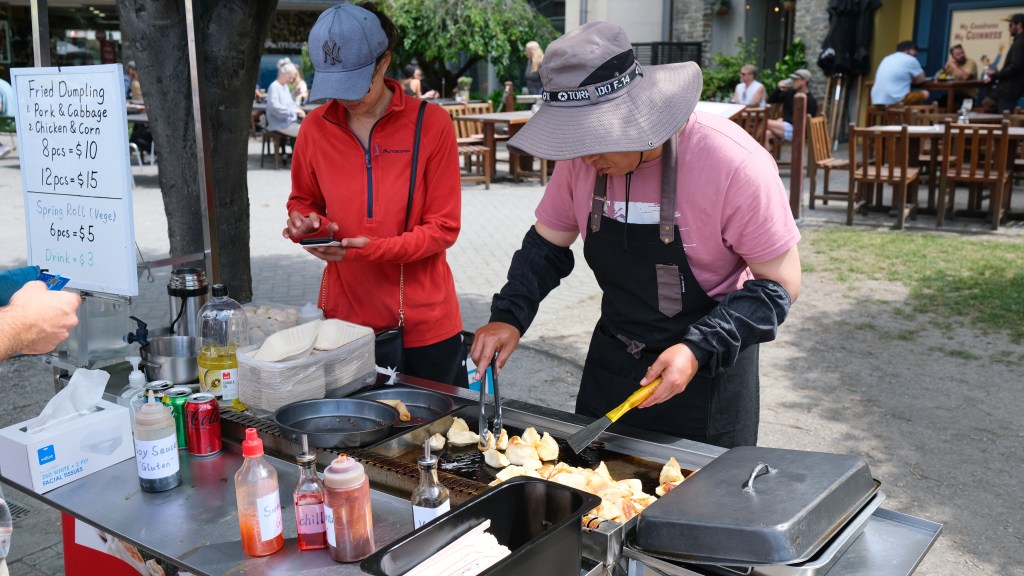
Queenstown street vendor. Fujifilm X-S10, Fujifilm XF 23mm F1.4 R LM WR, 1/480sec at f/4, ISO 320. Image credit: Jessica Miller
Not only am I used to a larger camera, but my go-to lens is the 18-135mm which gives me a range of options. I could have opted for the 16-80mm, but using a prime lens really made me think about what I wanted to capture, my positioning and image composition. I was impressed with how fast and quiet the combination was, meaning I could snap and capture moments as I saw them without a worry.

Queenstown Vacancy. Having seen Liam Wong’s cinematic work featured in AP, I was inspired when I saw the neon vacancy motel signs around the island. Fujifilm X-S10, Fujifilm XF 23mm F1.4 R LM WR, 1/320sec at f/2.5, ISO 320. Image credit: Jessica Miller
Fujifilm X-S10 for Whale watching
This was a different story going whale watching in Kaikoura – where I needed all the focal length I could get – along with strong sea legs. I took the 70-300mm lens. After our original timeslot being cancelled due to the whales feeding beyond the tour jurisdiction, we stayed an extra night in hope to see some wildlife. The 5am start the following morning paid off as we were lucky enough to see two sperm whales, many albatrosses, and a pod of dusky dolphins – who were joined by a southern right whale dolphin – the only dolphin without a dorsal fin. Of course, when watching these whales, everyone was hoping to see and capture the perfect tail flip shot as the whale dived beneath the surface.
Continuous shooting came in handy when trying to capture the fast-moving dolphin pod. The X-S10 can shoot at 8fps mechanical, 20fps electronic and 30fps with a 1.25x crop. Safe to say after 3 hours, I couldn’t wait to get off the boat. But it was the main reason I wanted to bring a lens with a bit more zoom. Weighing 580g and measuring at 75mm x 133mm this zoom is compact, and not OTT.

Sperm whale, an early start for whale watching proved rewarding. Fujifilm X-S10, Fujifilm XF 70-300mm F4-5.6 R LM OIS WR, 1/320sec at f/5.6, ISO 160. Image credit: Jessica Miller
Keeping steady
The in-body image stabilisation (IBIS) mechanism within the X-S10 works well and helped to counter any shake made from me and the moving boat, and still achieve shake-free shots. Likewise, optical image stabilisation is rated for 5.5 stops effectiveness for this lens and works together with the IBIS in the X-S10. Moments when you see a seal mother hoist her pup out from between some rocks and caterpillars forming cocoons are the prime opportunities to test the camera’s video skills. The X-S10 is capable of recording video in 4K at up to 30fps, and videos I took were notably free of shake and high quality.
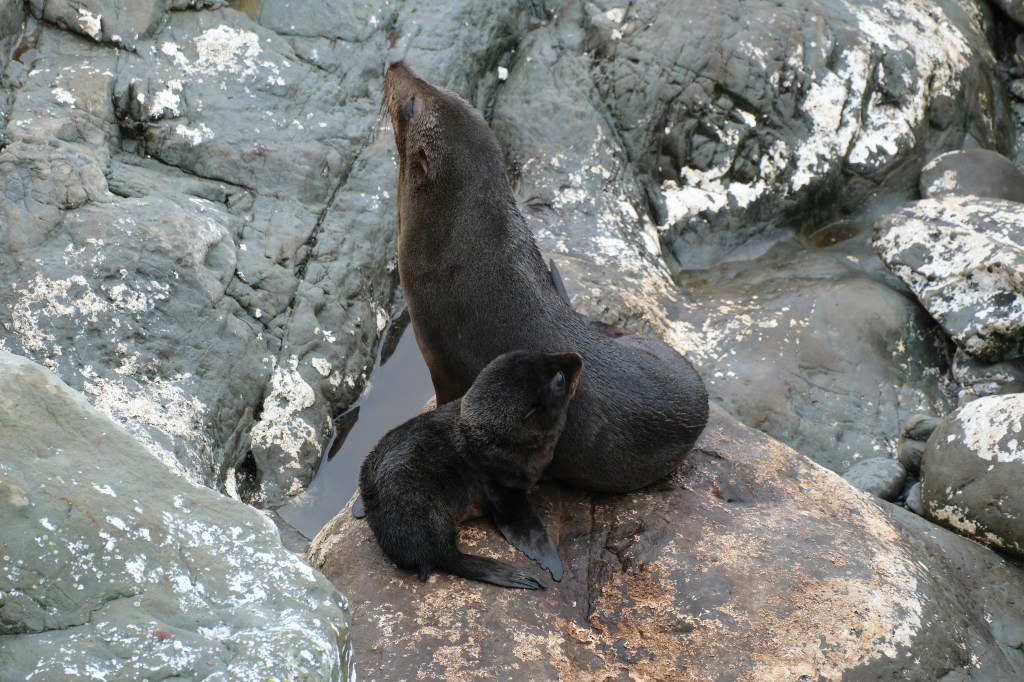
A seal mother and her pup in Kaikoura. Fujifilm XF 70-300mm F4-5.6 R LM OIS WR, 1/340sec at f/5.6, ISO 250. Image credit: Jessica Miller
Fujifilm X-S10 image quality
The performance of the Fujifilm X-S10 with all three lenses was fantastic. What really stood out for me was the colour and quality of the images. It produces high quality JPEGs that needed little or no editing in post processing. I’m not one for doing a lot of editing, so being able to get them right in camera is a real benefit. As such, for the majority – and all of those in this feature – I have not needed to do much major tweaking.
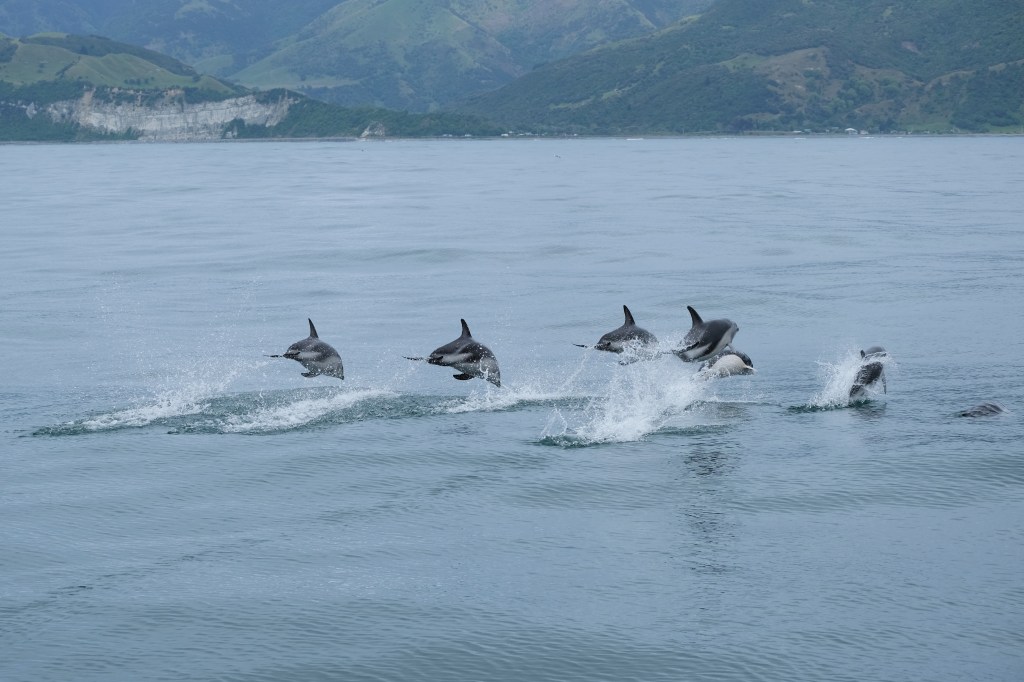
Speed and continuous shooting were needed to keep up with these dusky dolphins. Fujifilm X-S10, Fujifilm XF 70-300mm F4-5.6 R LM OIS WR, 1/950sec at f/5.6, ISO 160. Image credit: Jessica Miller
I was impressed with the autofocus system. Not only was it quick, but the eye detection AF worked well when trying to get sharp focus – such for a portrait of the beautiful yellow eyed penguin shown below. As one of the rarest penguins in the world, getting this photograph was one of my top photo highlights from the trip. I visited this particular location twice in hope of seeing some.
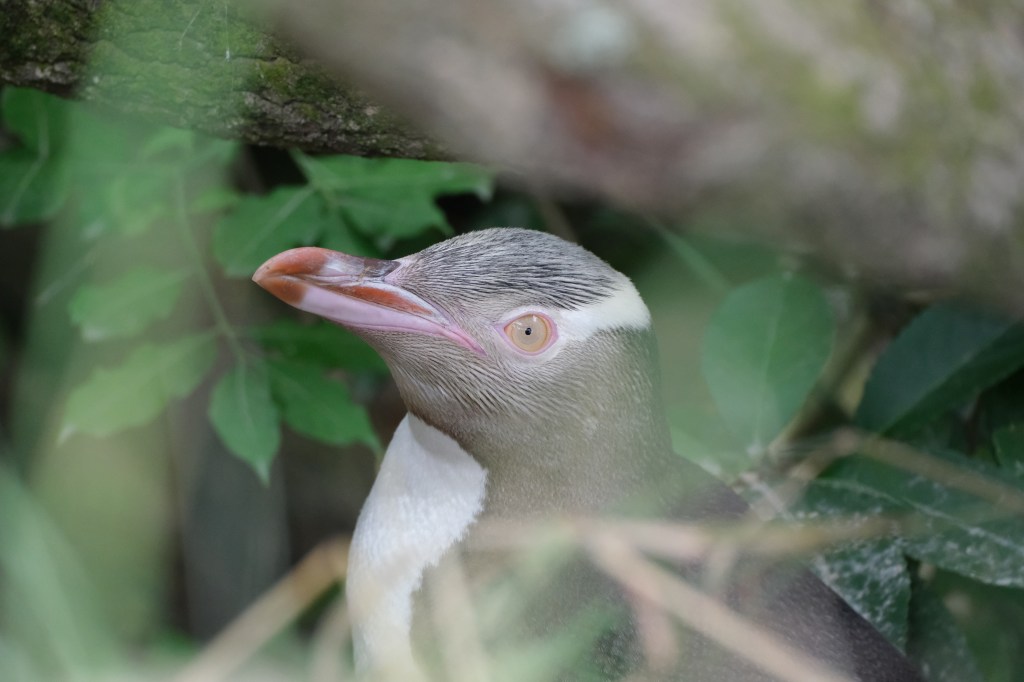
Yellow-Eyed Penguin, one of the world’s rarest penguins, a fast, silent shutter as well as, accurate focus was necessary to achieve this shot. Fujifilm X-S10, Fujifilm XF 70-300mm F4-5.6 R LM OIS WR, 1/900sec at f/5.6, ISO 3200. Image credit: Jessica Miller
After having a miss the first time, upon our return I saw one penguin returning to the beach from sea. A fantastic sight. But on our way back to the car, some kind strangers saw my camera and informed me they saw some more penguins up by the main path. As promised, on the slow walk back up the path, there they were, a pair of penguins just off the path peering back at me through some bushes. Was I grateful for a silent shutter!
The camera also performs well in low light, but getting photographs of little blue penguins on New Year’s Eve was much easier when they were standing pruning themselves under streetlights.
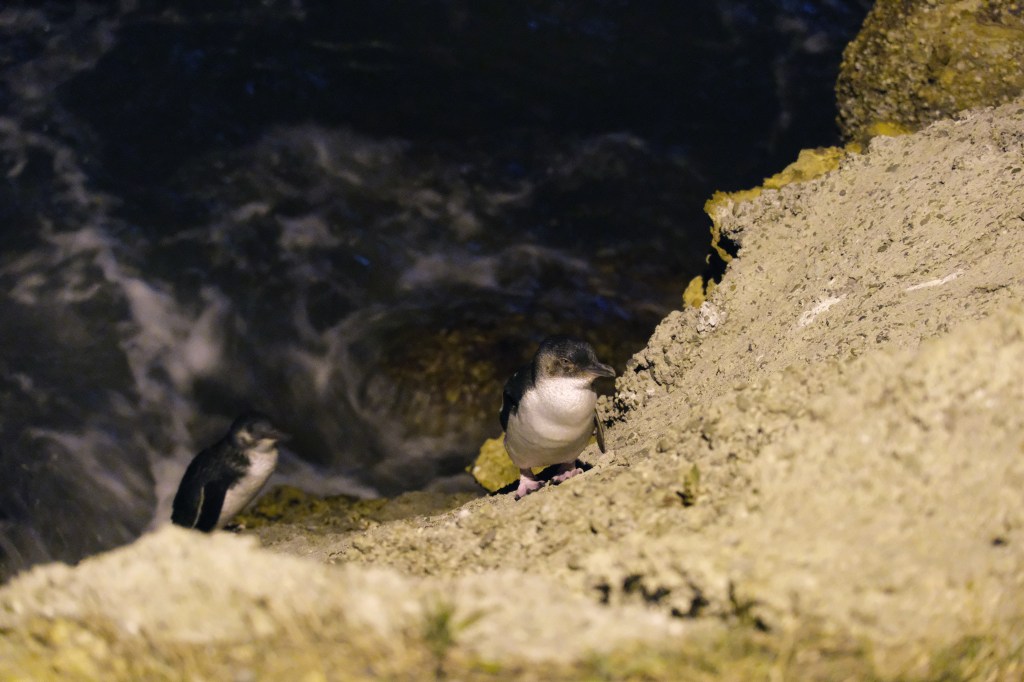
Some street light and a high ISO came handy when photographing little blue penguins at night. Fujifilm X-S10, Fujifilm 16-80mm F4 R OIS WR, 1/17sec at f/4, ISO 12800. Image credit: Jessica Miller
Verdict
Sending back the camera when I got home was a sad day. Even more so when I picked up my Pentax again after over a month off – wow did it feel heavy. Coming from a larger camera with a deep handgrip, the build of the X-S10 was a fine transition – it felt robust and lovely to hold.
Does the Fujifilm X-S10 match up to the title of being one of the best cameras for DSLR users looking to shift to mirrorless? Yes. Did it meet all my requirements of a new camera if I were to upgrade? Yes, but I think I’d feel more at ease with a bigger battery life and the weather sealing my Pentax offers. However, I loved using it. If these factors don’t matter as much to you, then it is a perfect upgrade.
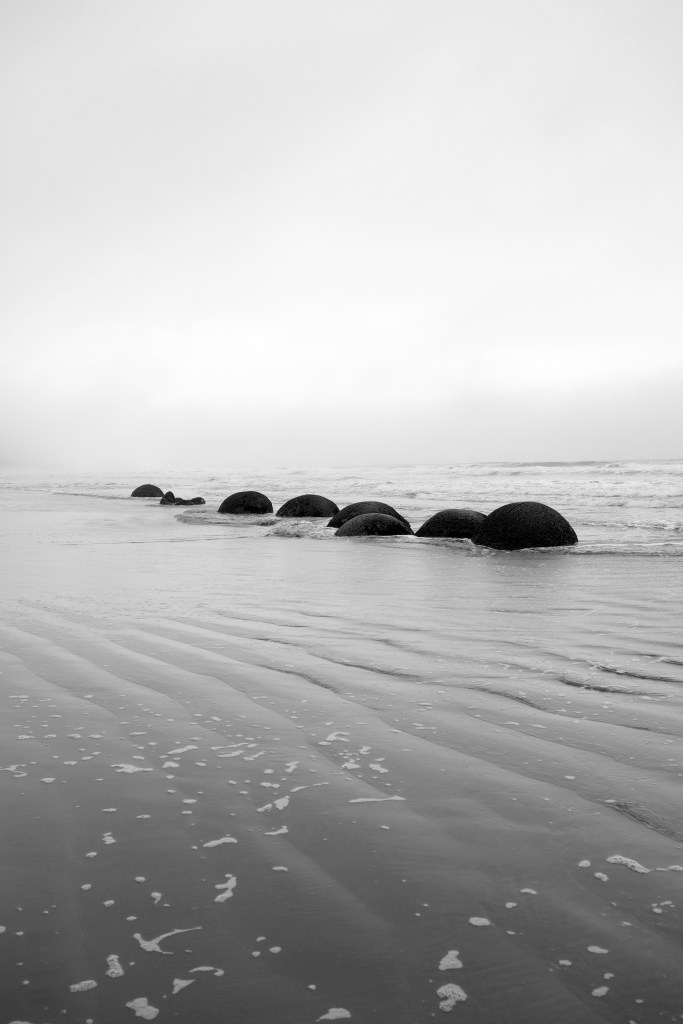
Moreaki Boulders. Fujifilm X-S10, Fujifilm 16-80mm F4 R OIS WR, 1/220 sec at f/5.6, ISO 160. Image credit: Jessica Miller
Read our full Fujifilm X-S10 review here.
Plus, see the best Fujifilm cameras and Fujifilm X-mount lenses.
Featured image: Image credit: Jessica Miller. The stunning view of Mount Cook from Lake Pukaki. We were lucky to see the peak clearly twice on our travels. The X-S10 was fantastic for landscape photography Fujifilm X-S10, Fujifilm 16-80mm F4 R OIS WR, 1/1300sec at f/5.6, ISO 160

All creatures great and small. A relatively slow shutter speed allowed me to capture some of this bee’s action in flight. Fujifilm X-S10, Fujifilm 16-80mm F4 R OIS WR, 1/320sec at f/5, ISO 160. Image credit: Jessica Miller
Join us on an AP photography holiday to visit incredible places and improve your photography – including wildlife and landscape genres!







